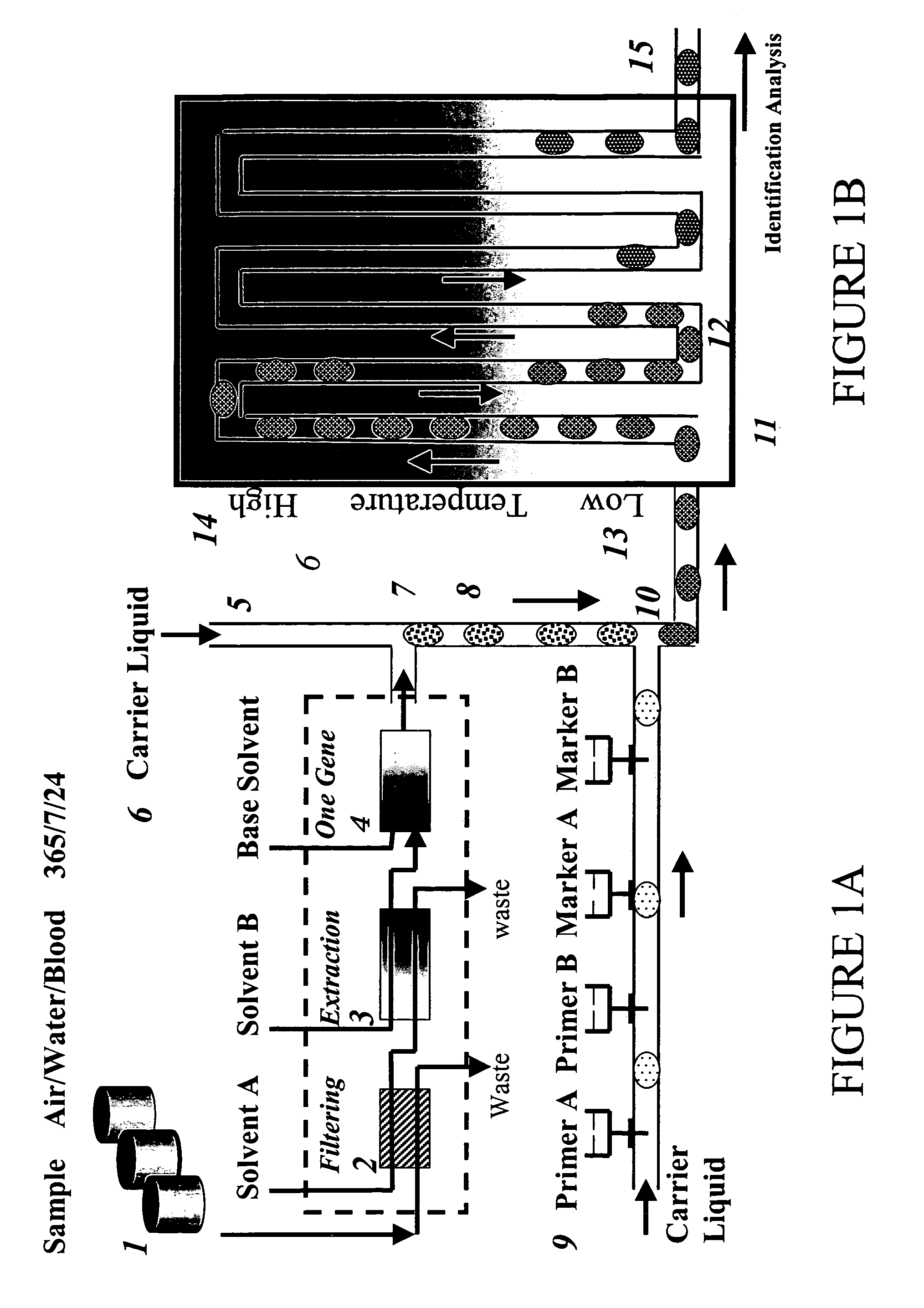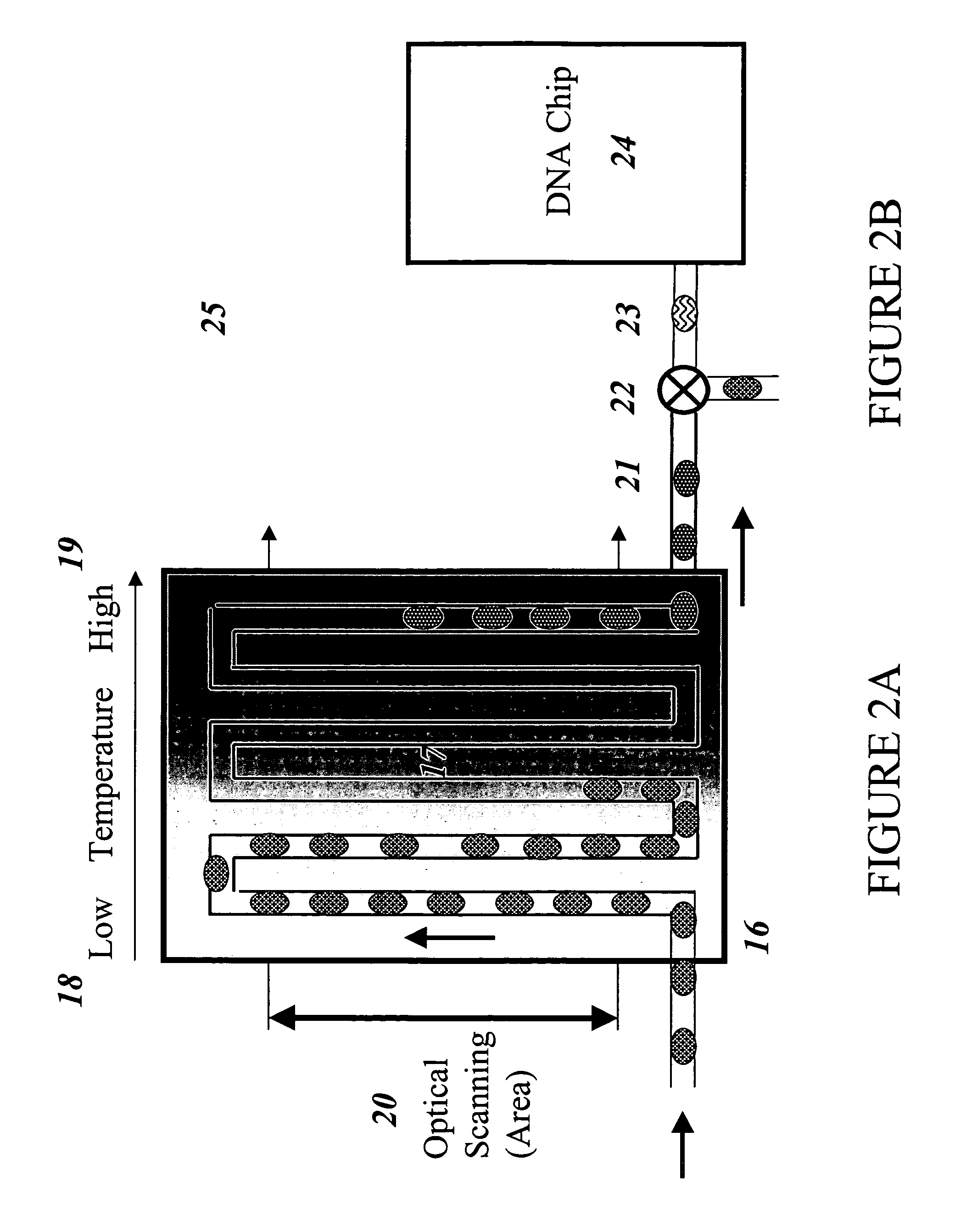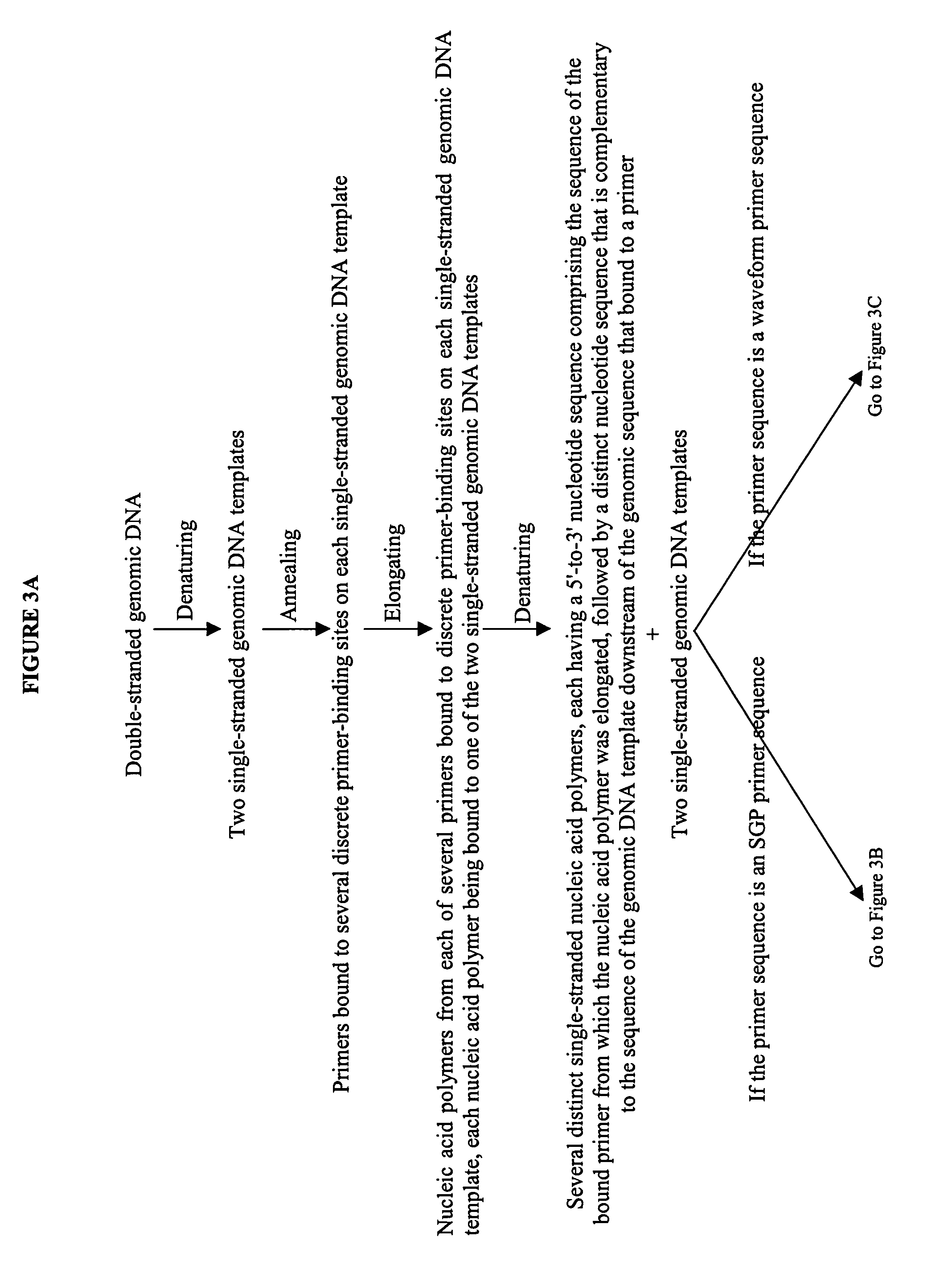Devices and methods for monitoring genomic DNA of organisms
a technology of organisms and devices, applied in the field of devices and methods for monitoring genomic dna of organisms, can solve the problems of expensive and seemingly redundant continuous screening, and achieve the effects of reducing the length of time, eliminating exponential amplification, and reducing the cost of screening
- Summary
- Abstract
- Description
- Claims
- Application Information
AI Technical Summary
Benefits of technology
Problems solved by technology
Method used
Image
Examples
example 1
The Single Genome Profile (SGP) Method Comprising Modified PCR (mPCR) and Half-Time Elongation Step
[0180]The examples and figures provided herein are theoretical constructions provided to aid one of skill in the art in an understanding of the invention, as well as to delineate the improvements described herein. FIG. 3 is a flow diagram that delineates the first cycle of waveform profiling methods, including the SGP method (FIG. 3A), and compares the results of subsequent cycles of the SGP method (FIG. 3B) and other waveform profiling methods (FIG. 3C). It should be noted that the flow diagram represents the use of one copy of the genomic DNA to be detected. However, as discussed above, only with the SGP method will this amount of genomic DNA be sufficient for the formation of detectable higher-order structures.
[0181]To further demonstrate the invention, both a theoretical primer sequence and a theoretical genomic sequence are provided in Example 1.1 and Example 1.2, respectively, to...
example 1.1
Theoretical Primer Sequence
[0182]In the model provided herein, the primer is 5′-AGC-3′.
example 1.2
Theoretical Genomic Sequence
[0183]A 1001 bp genomic sequence containing the four DNA nucleotide bases (adenine “A,” guanine “G,” thymidine “T,” and cytosine “C”) in random order and frequency was generated by use of a computer program. A few bases of this theoretical, randomly generated sequence were altered in order to obtain a sequence that more clearly demonstrates the SGP method. The sequence of each of the single-stranded genomic DNA templates of the double-stranded genomic DNA is shown in FIG. 4. The sequence of one of the single-stranded genomic DNA templates is presented 5′-to-3′ and is represented by uppercase letters corresponding to the nucleotide bases (SEQ ID NO:1); the complementary single-stranded genomic DNA template is presented 3′-to 5′ and is represented by lowercase letters corresponding to the nucleotide bases (SEQ ID NO:2). Bolded letters on each genomic DNA template show the sites at which the theoretical primer of Example 1.1 is expected to anneal, i.e., prim...
PUM
 Login to View More
Login to View More Abstract
Description
Claims
Application Information
 Login to View More
Login to View More - R&D
- Intellectual Property
- Life Sciences
- Materials
- Tech Scout
- Unparalleled Data Quality
- Higher Quality Content
- 60% Fewer Hallucinations
Browse by: Latest US Patents, China's latest patents, Technical Efficacy Thesaurus, Application Domain, Technology Topic, Popular Technical Reports.
© 2025 PatSnap. All rights reserved.Legal|Privacy policy|Modern Slavery Act Transparency Statement|Sitemap|About US| Contact US: help@patsnap.com



